To create a new template, in the main menu select “Audits & Inspections” and click on the option “Templates – General”. Then in the upper right hand corner, click on the blue “Create New Template” button.
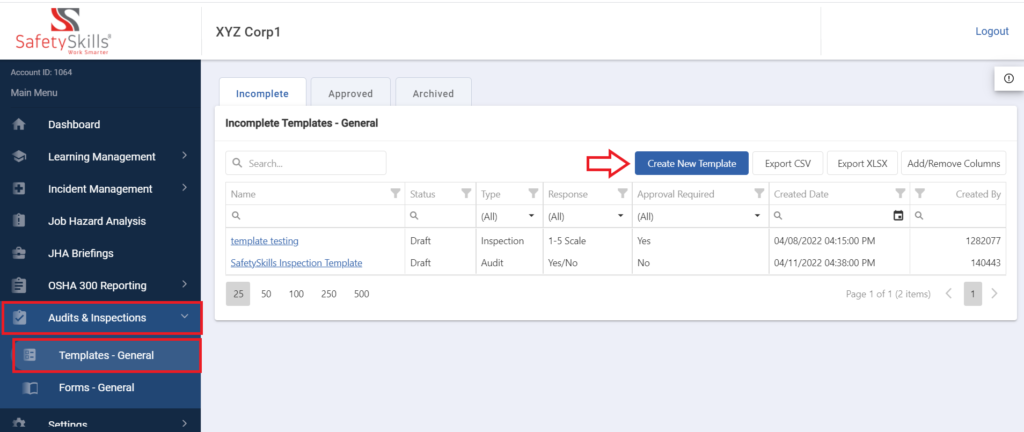
This will generate a pop-up for you to fill in the initial information.
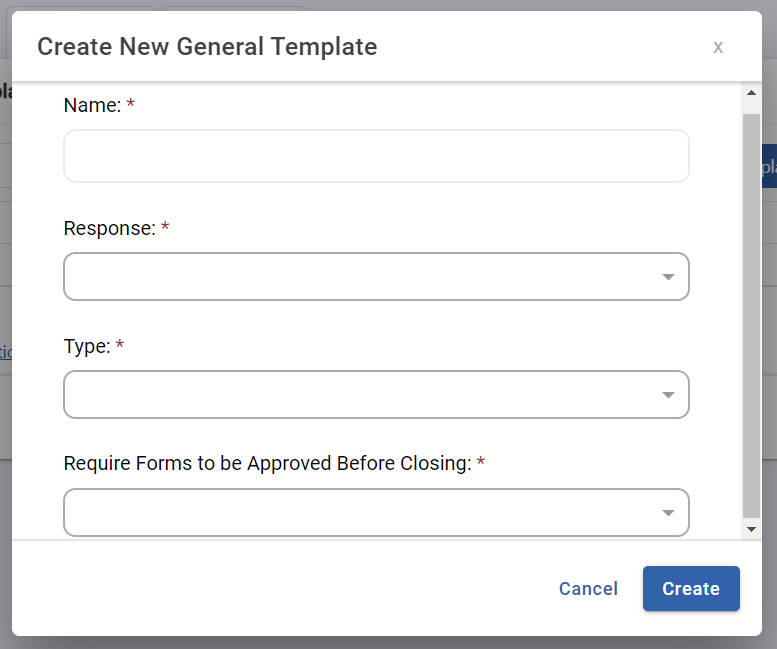
First, you will need to enter a unique name for your template. If you try to utilize a name of a template that has already been created an error will populate informing you to update the name you have selected.
Next, you will to select the form of response you would like utilize within your template. The options are:
- 1-5 Scale
- Pass/Fail
- Yes/No
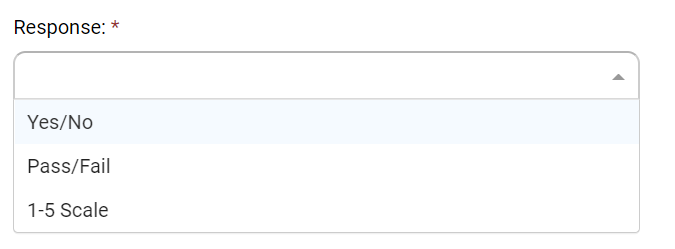
After selecting the response next you will identify the type of template this will be. The options for this field are “Inspection” or “Audit”.

The final selection that will need to be made is if you would like to require any forms submitted created from this template to be approved before they are able to be closed. The options for this are “Yes” or “No”.

After all of the initial information is filled in, you can click “Create”.
This will populate the audit/inspection template that you created in your grid view on the “Incomplete” tab. Click the name of the template to continue populating its data. On this page you will need to enter the instructions and criteria for the template before submitting it for approval.
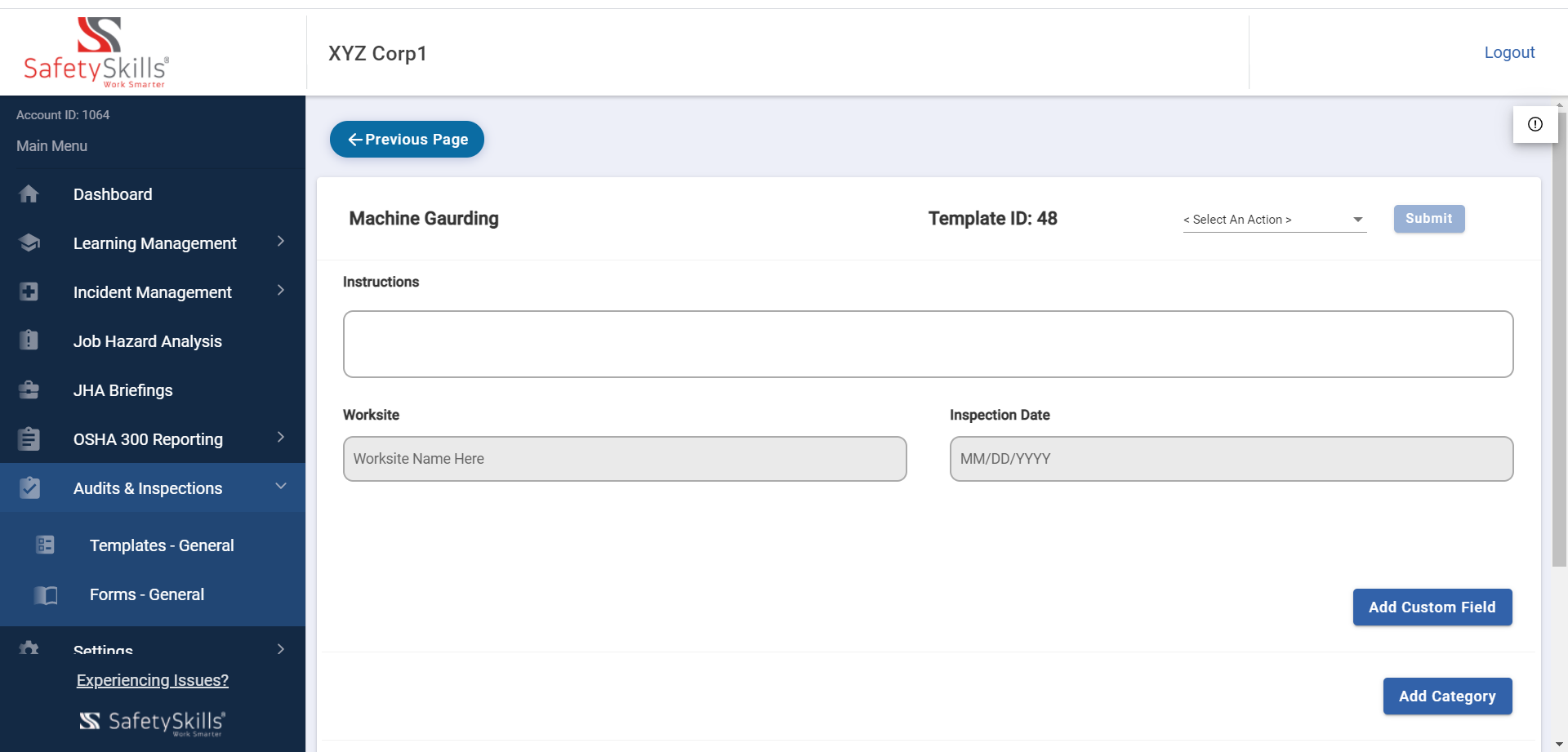
On this page if a section is highlighted in grey, you are not able to edit the information on this template, however the information will be present and can be edited on the form.
You will first need to fill out the Instructions section. The Instructions section will allow you to provide instructions for the specific audit/inspection template. This could include the logic you would like them to follow, or the definition of the criteria you have chosen for them to utilize. These instructions will then appear on every form created that is associated with this template and be un-editable on the forms. The maximum limit for this field is 2,000 characters.
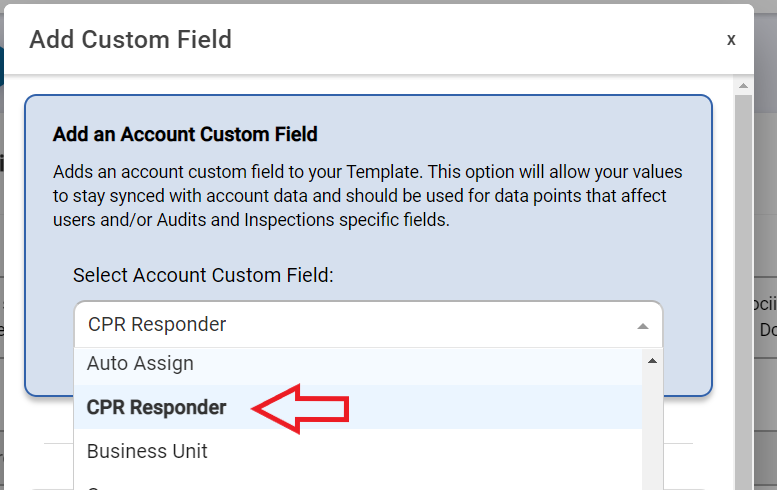
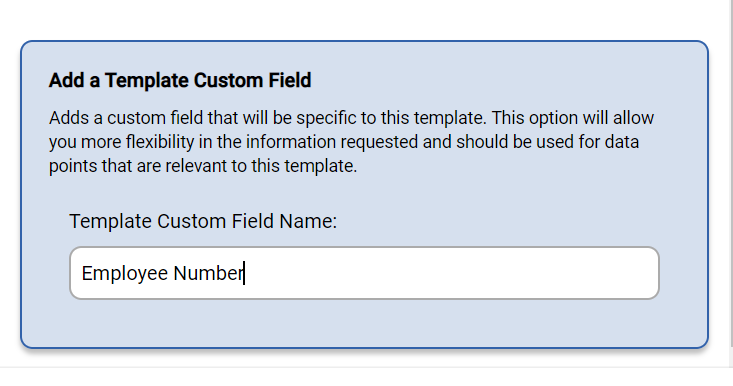
Account Custom Fields will be a list of the existing Custom Fields in your account. A Template Custom Field is a text box with a maximum limit of 50 characters. Depending on which item you choose, the option will highlight in blue and allow you to select/type the specific field you need. Once you make your selection, click “Add” at the bottom of the pop-up message.
If a custom field is added in error or if it is no longer needed it can be removed from the template. To remove the custom field, you can select the red “x” button in the top corner of the field box you would like to omit.
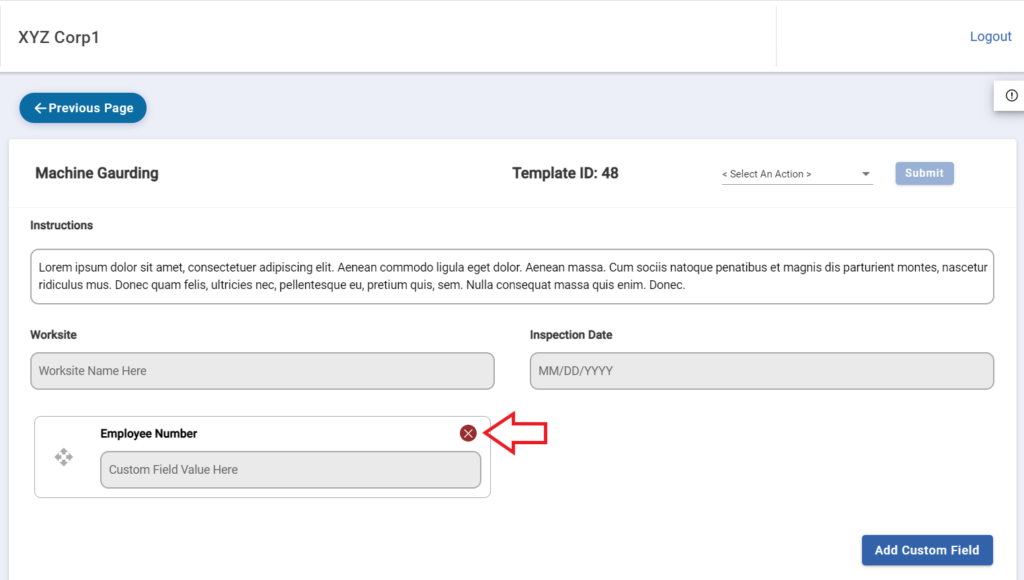
If this is selected, you will receive a pop up informing you that proceeding will delete the custom field and that the action cannot be undone. If you would like to proceed you can click the blue “Remove Custom Field” button to complete this.
You then have the ability to add or remove categories included in the template. To add, click the blue “Add Category” button on the right. This action should generate a pop-up message asking you for to name your category. Categories are the sections of an audit or inspection that you would like your users to perform. We only require the name of a category for it to be included in the template. Once added, it will create that section on your template for you to include new items or criterial elements that you would like your users to inspect during their audit or inspection. Each category within the template will have to be unique, as you are unable to have 2 categories in the same template with the same name.
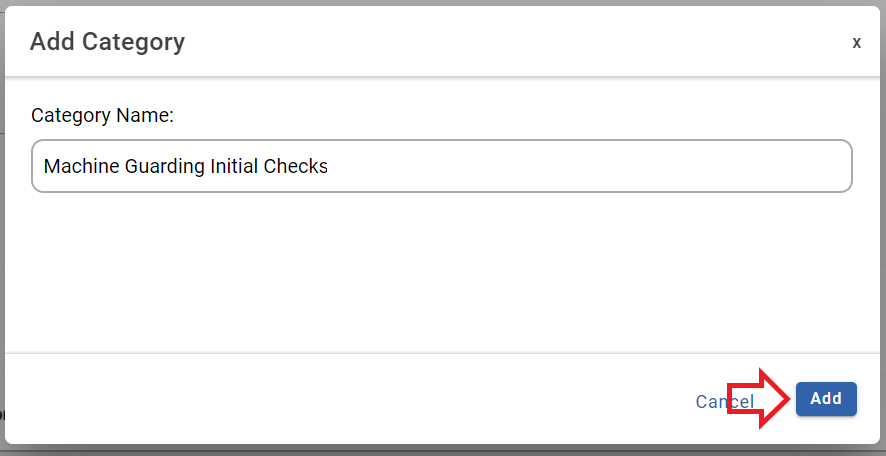

If this is selected you will prompted with a pop up message informing you that you have selected to remove the category from the template, and that proceeding will delete the category and all associated items. If this action is completed it cannot be undone. To complete this you will need to type “Delete” into the text box and click the blue “Remove Category” button.
Once this is complete, you can select “+ New Item” to add and modify additional inspection items. Items are the individual questions/criteria that your users will be populating during the process of an Audit or Inspection. You can choose the name for your item, and then determine how you would like your users to perform the audit or inspection. Best practice is to write the items in a way that the affirmative action response signifies that the audit/inspection item has been fulfilled.
There are several questions to answer when needing to add a new item to your template. You can then select if you would like a CAPA to be required if the inspection item fails. You can also determine if you would like attachments and comments to be required on the form. Please note, you are simply creating the items from the template view. Populating responses to the items can be done later on from the form(s) that are created from this template.


